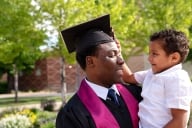You have /5 articles left.
Sign up for a free account or log in.
I have been fortunate to serve at several well-respected institutions of higher education that have aspired to “educate the whole person,” one who will go on to lead a successful career and live a meaningful life. Yet, throughout my career, I have been surprised by the barriers often created by our institutional structures that seemingly work against this noble endeavor.
Having served as both chief academic and chief student affairs officer with responsibility for athletics, I have come to believe that if we are to deliver on the promise of a holistic educational experience designed to enhance the intellectual, social, physical and spiritual development of students, then we have to place their individual strengths, weaknesses, needs and interests at the center of our attention.
In this way, I believe that faculty members as well as co-educators on campus can work to intentionally integrate the learning that takes place both inside and outside the classroom by helping students make the most of their college years and, ultimately, reach their full potential.
From listening to student voices over time, I have come to understand that many fine liberal arts institutions like Wittenberg University offer:
• first-rate academic programs;
• strong, caring relationships between students and dedicated faculty and staff members; and
• engaged educational practices (e.g., undergraduate research, service learning, academic internships, and study abroad) that we know enhance student learning and success.
On the other hand, what appears less common are the alignment and integration of such efforts across campus in ways that place the holistic development of students firmly at the center of our collective work.
Some students are clearly capable of entering our institutions and figuring out how to work across organizational structures to create powerful learning experiences. Yet, over the course of my career, I have witnessed too many students struggle with issues surrounding their search for meaning while experiencing frustration trying to maneuver the often complicated and disconnected structures we have created to serve them.
Given this reality, I wonder how students would experience our institutions if we assigned them not only a faculty advisor but also a co-educator (likely from student development, campus ministry, or athletics) and perhaps a peer mentor to help them create an individualized, comprehensive four-year developmental plan from their earliest days on campus. This experiential map would incorporate curricular, co-curricular, and extra-curricular elements and would change over time. Further, it would provide the context for having students intentionally begin to envision their futures after completing their undergraduate education.
More controversial, perhaps, is my belief that we must reimagine our institutions organizationally and spatially to ensure that students are at the center of our consideration. I have begun to ask my own community the following types of questions: Are there ways we can more effectively educate students by linking in-class and out-of-class learning experiences? Should we centrally locate high-impact educational practices (e.g., first-year programs, community engagement, study abroad, and internships) to make them more easily accessible to students, as well as allow for greater collaboration among staff members across areas? How might we more effectively mentor or coach students as they create their four-year educational plan leading to the discovery of their “vocation” or “calling” in life?
In essence, we must engage our students in the conversations that govern their experience (versus our perception of their experience). We, administrators included, must see ourselves as true co-educators to guarantee that the “whole-person” educational experience exceeds students’ expectations. In so doing, our structures and practices can play a critical role in shaping student success on campus and beyond.
I am optimistic that by staying firmly focused on institutional mission and the needs of students that our efforts will continue to help students cultivate self-awareness, discover their respective callings, and recognize their responsibilities to the larger community. In this way, our liberal arts institutions will continue to deliver on their intended promises.
Laurie M. Joyner, President
Wittenberg University

Want articles like this sent straight to your inbox?
Subscribe to a Newsletter





